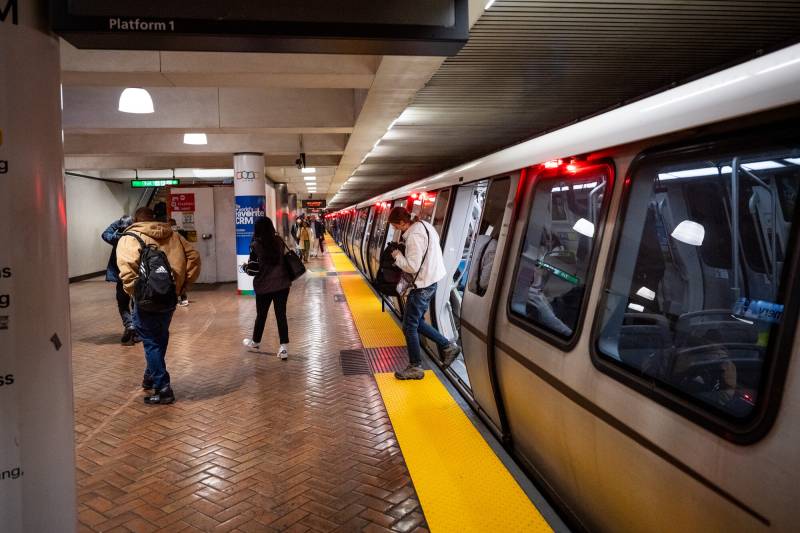Multiple Bay Area elected officials signed the letter, including Assemblymembers Mike Fong and Matt Haney and state Sen. Dave Min.
However, the resulting back-and-forth between the council, BART, and Newsom’s office suggests that no one agrees on where to deploy the officers or whether to deploy them at all.
A coalition of over 100 Asian American Pacific Islander groups and individual leaders signed the letter. A quarter of all BART riders are Asian American, according to the council. And while BART does track crime in its trains and stations, it doesn’t break the data down demographically, so it’s difficult to tell whether the group is disproportionately targeted.
In its response to the letter, a BART spokesperson wrote that the agency “would welcome the strategic deployment of the CHP in the areas around our stations. This will help keep problems out of BART.” The agency declined to comment specifically on whether they would welcome CHP officers on trains and in stations.
In its response, the BART spokesperson also noted that, according to the agency’s data, the overall crime rate is down 12% compared to this time last year, and violent crime is down 6%.
“Perhaps the most impactful thing that can be done to increase safety presence at BART is the Bay Area Council’s commitment to run a marketing campaign to recruit more police officers, Ambassadors, and Crisis Intervention Specialists,” the agency wrote. “While 2023 has been BART’s strongest year for hiring new officers since 2019, recruiting for officers remains challenging for the entire region … We look forward to seeing their marketing campaign to help with these efforts.”
The agency seemed to refer to an informal recruitment campaign the council previously worked on for law enforcement more generally, not for BART specifically, Bay Area Council spokesperson Rufus Jeffris said.
“It’s very disappointing to hear that BART’s only response is to deflect from its responsibility and obligation to keep riders safe and instead blame others,” Jeffris wrote in an email to KQED. “We helped secure more than $1.2 billion in federal and other funding for BART of which none that we’re aware was used to recruit or deploy more uniformed officers throughout the system.”
Meanwhile, Newsom’s office — now in the middle of the disagreement — has been noncommittal.
In response to KQED’s request for comment, a spokesperson for Newsom deferred to BART.

